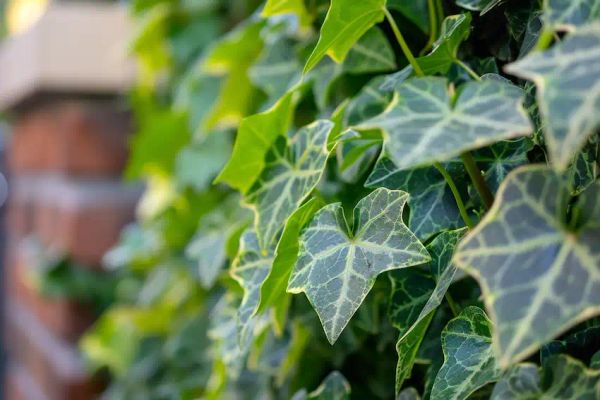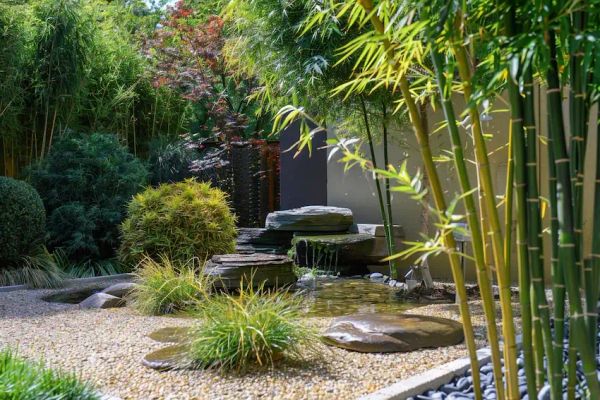
Invasive plants can cause a lot of trouble by disturbing the natural balance of our environment. They can take over and push out native species, disrupt local ecosystems, and reduce biodiversity. While some of these plants may seem attractive or grow quickly, they can cause long-term problems in your yard. Here’s a list of 11 common invasive plants you should avoid planting, along with some tips on how to manage them if they’re already present.
1. English Ivy

Description: English Ivy is a popular evergreen climbing vine that can quickly cover walls and fences.
Issues: It can smother trees and native plants, leading to a decrease in biodiversity.
Management: Regularly trim back the ivy and remove any new growth. If needed, use an herbicide to kill persistent patches.
2. Kudzu
Description: Kudzu is notorious for its rapid growth rate and is often called “the vine that ate the South”.
Issues: It can cover and suffocate native trees and shrubs, damaging forests and wildlife habitats.
Management: Cutting the vines and using herbicides can help control kudzu, but it may require professional assistance due to its aggressive nature.
3. Purple Loosestrife
Description: Purple Loosestrife is a striking perennial with spikes of purple flowers often found near water bodies.
Issues: It outcompetes native aquatic plants and reduces diversity in wetlands.
Management: Remove plants by hand before they seed, and consider using herbicides as a last resort.
4. Japanese Knotweed
Description: Japanese Knotweed is a shrub-like perennial known for its dense clumps and hollow stems.
Issues: Its roots can damage building foundations, roads, and drainage systems.
Management: Persistent cutting and herbicide treatments are necessary to control its spread.
5. Giant Hogweed
Description: Giant Hogweed is a large flowering plant that can cause severe skin irritation.
Issues: Besides health risks, it also outcompetes local flora.
Management: Wear protective clothing and carefully dig out the roots. Dispose of plants in accordance with local regulations to prevent further spread.
6. Bamboo

Description: Bamboo is a fast-growing plant often used for screening, but some species can quickly become uncontrollable.
Issues: Bamboo spreads aggressively through its rhizomes, invading gardens and natural areas.
Management: Install root barriers at planting or remove by physically digging out the rhizomes.
7. Water Hyacinth
Description: Water Hyacinth is an aquatic plant with beautiful floating flowers.
Issues: It can form dense mats on water surfaces, blocking sunlight and depleting oxygen levels, harming aquatic life.
Management: Physically remove the plants and ensure no fragments remain that could regrow.
8. Scotch Broom
Description: Scotch Broom is a bushy shrub with vibrant yellow flowers.
Issues: It produces a large number of seeds that spread easily and dominate over native species.
Management: Cut and uproot plants before they seed. Larger infestations may require herbicide treatments.
9. Butterfly Bush
Description: Butterfly Bush is known for attracting butterflies and can quickly spread beyond garden boundaries.
Issues: It produces a high number of seeds that easily invade wild areas.
Management: Choose sterile cultivars or regularly deadhead flowers to prevent seeding.
10. Common Buckthorn
Description: Common Buckthorn is a hardy shrub or small tree that forms dense thickets.
Issues: It displaces native plants and can degrade wildlife habitats.
Management: Mechanical removal and herbicide treatments are necessary to effectively control its spread.
11. Morning Glory

Description: Morning Glory vines are known for their beautiful flowers and can be highly invasive.
Issues: They can quickly cover other plants, structures, and trees, choking out native vegetation.
Management: Keep vines trimmed back and remove any seedlings as soon as they appear.
When choosing plants for your yard, it’s important to consider their impact on the local ecosystem. Opt for native or non-invasive species that will complement the existing flora. If you’re dealing with invasive plants, consistent management and sometimes professional advice are essential to control their spread and minimize ecological damage. For more eco-friendly gardening tips, check out our guide on 11 plants that act as natural insect repellents.




